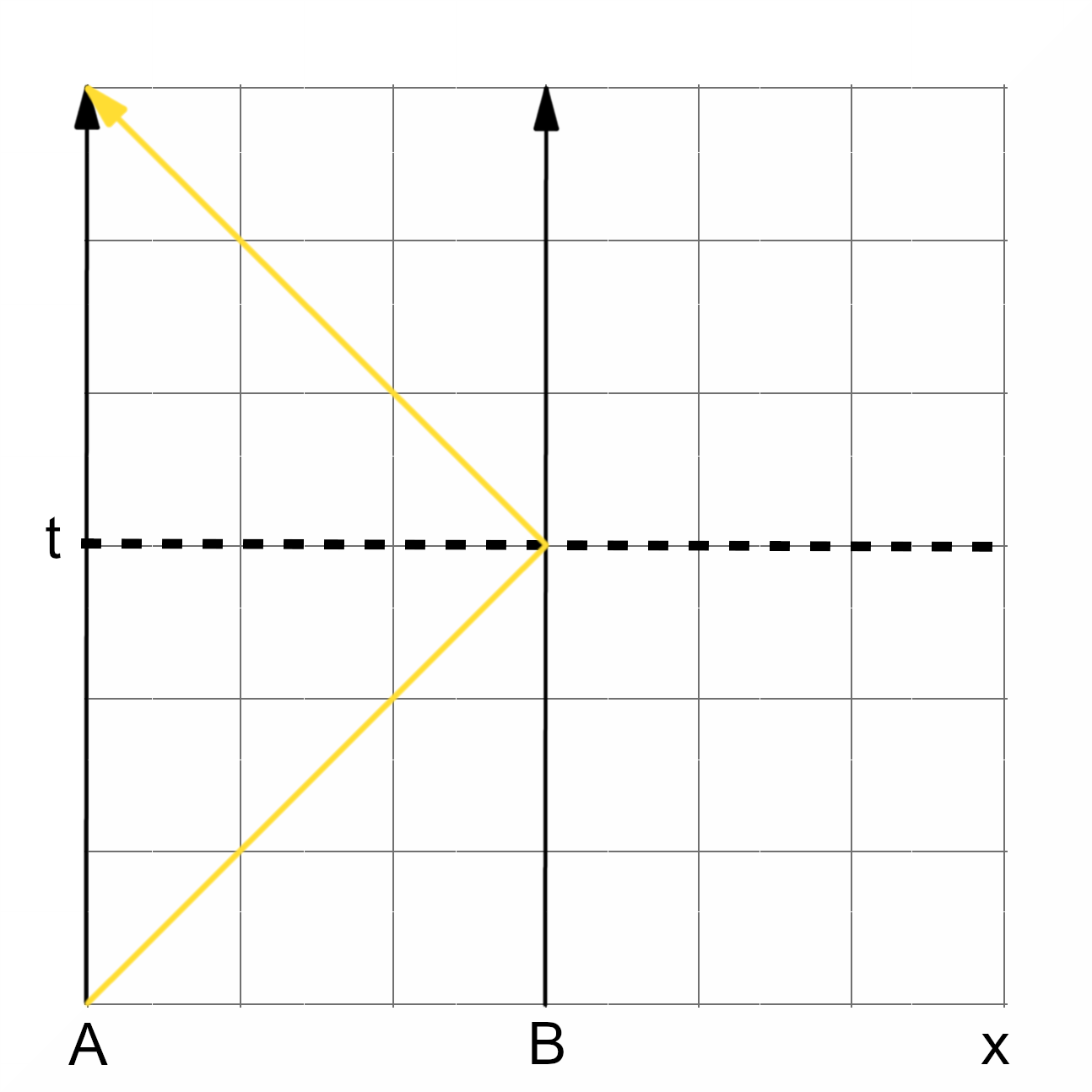In his analysis of simultaneity Einstein restricts himself explicitly to reference frames that are inertial. Then he considers two points in space, A and B where observers, equipped with clocks, identical in all relevant aspects, can determine the time values of events in their immediate neighborhoods. Let now a light signal (or any other electromagnetic signal) travel from point A to point B, leaving A at time according to the clock at A (clock A for short). This signal is immediately reflected at B in the direction of A, arriving back there at time .
A common time in inertial frames can now be established by stating that the ‘time’ needed for the light to travel from A to B is equal to the ‘time’ it needs to travel from B to A. According to the Einstein’s synchronization rule clock B is synchronized with clock A, if
